Best Bathroom Plants for Low/No Light, Without Sunlight & Windows
Having a low or zero light in your bathroom probably because of it has no windows or it is in the part of the house that hardly receives direct sunlight should not be a reason to avoid plants in your shower space. While most plants need light, some can thrive in low, no light, or direct sunlight.
Some of the best low-light plants for bathrooms include Bromeliads, Chinese Evergreen, Monstera, Cast Iron Plant, Dracaena, Maidenhair Fern, Peace Lily, Parlor Palm, Snake Plant and More. Read on for details plus care tips for these plants
Bromeliads
Bromeliads are fairly long-lived and slow-growing tropical houseplants that usually come with vibrant pops of color. Although the central plant dies after flowering, they produce pups that can be separated and potted up to form new plants.
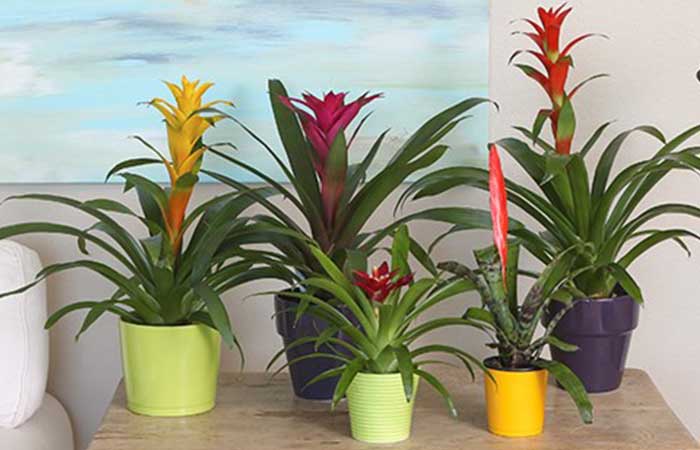
Their unique look and tropical feel make them a top bathroom choice. Bromeliads grown as houseplants vary in size from one inch to 2 to 3 feet (0.91 meters) tall.
Most bromeliad species prefer bright indirect sunlight rather than direct light. Extended exposure to full sun can damage a bromeliad’s leaves. It’s best to keep it near, but not directly in front of, a window.
Bromeliads can also thrive on fluorescent lighting if natural light is not available.They should be well watered and also allow the soil to dry before watering again. Many bromeliads hold water in a leaf cup called a tank.
The tank should be kept filled with water at all times. Be careful, when you fill the tank, not to let the water soak the soil. Bromeliads are prone to root rots if the soil is wet. Flush the tank periodically by pouring fresh water into it, inverting, and filling again.
This will prevent stagnation and buildup of mineral salts. Lastly, this plant needs humid air to prosper. If your bathroom is not moist enough, then you may need to provide humidity for your plants by misting them frequently.
Chinese Evergreen
Chinese evergreen is a durable plant that tolerates a fair amount of neglect. The botanical name for this plant is Aglaonema. It comes from the Greek words, algos, meaning shining, and nema, meaning thread.
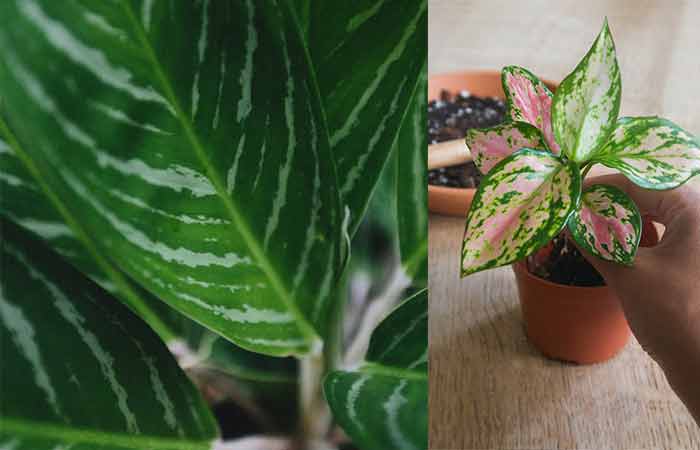
This alludes to the beautiful shining leaves, which are their chief attraction. Mature plants produce lovely, white blooms that resemble calla lilies. The long, narrow leaves can reach up to two feet long, and the plants themselves typically grow one to three feet tall and just as wide.
Chinese evergreen thrives in very low light or under a regular bulb, and too much light will scorch the leaves. Choose a variety with darker leaves, as variegated types with cream or silver markings require a bit more light; they can even thrive under fluorescent light conditions.
Chinese evergreens like the soil to remain moist, but, like so many other houseplants, they don’t like to be waterlogged. Once the top 2 inches (5.08 cm) of soil are dry, it’s time to take out the watering can.
They need more humidity. In case you see brown tips on the leaves, that’s a sign they require more humidity.
Monstera (Monstera deliciosa)
Also known as the Swiss cheese plant, monstera shows off with big, bold, heart-shaped leaves that develop interesting holes or splits as the plant matures.
Any level of light suits this plant, but so be sure to provide a trellis or moss-covered stick because it likes to climb.
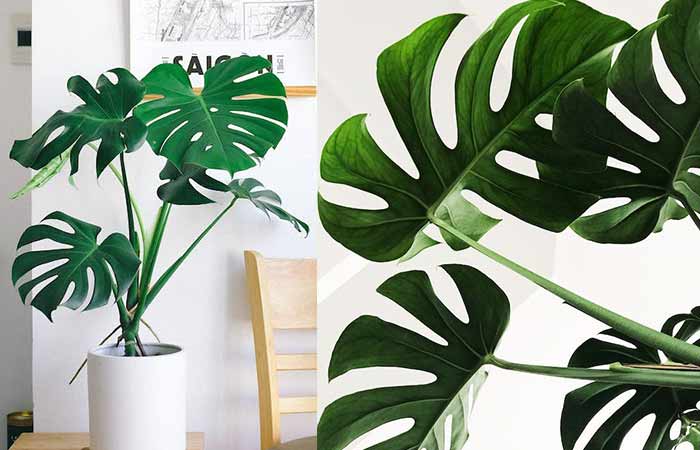
Cast Iron Plant (Aspidistra elatior)
This slow-growing plant is super hardy, but overwatering can kill the plant, and repotting too often can also have a negative effect. The only requirement is to keep them away from direct sunlight to keep their leaves from getting scorched or turning brown.
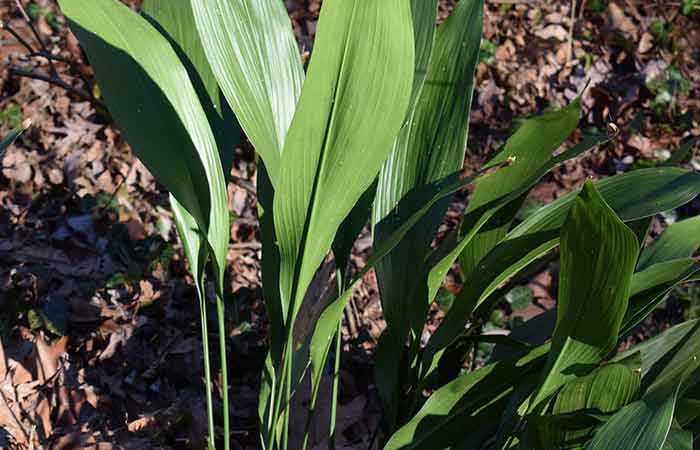
Cast iron plant tolerates very low light, but like most shade-loving plants, it won’t grow in complete darkness. It grows to a height of about 60 meters. They like the soil to be slightly moist, but never soggy. This plant is fairly tolerant of drought.
If you want to give your cast iron plant some extra care, wipe down its leaves once a week with a damp cloth to keep the dust off. Clean leaves allow it to more easily take in the sun and all of its nutrients.
Dracaena (Dracaena sanderiana)
Dracaena has another name, which is the lucky bamboo. This plant comes in many varieties. The larger varieties, like the dracaena massangeana, have a tree-like look and work especially well as floor decor in your bathroom.
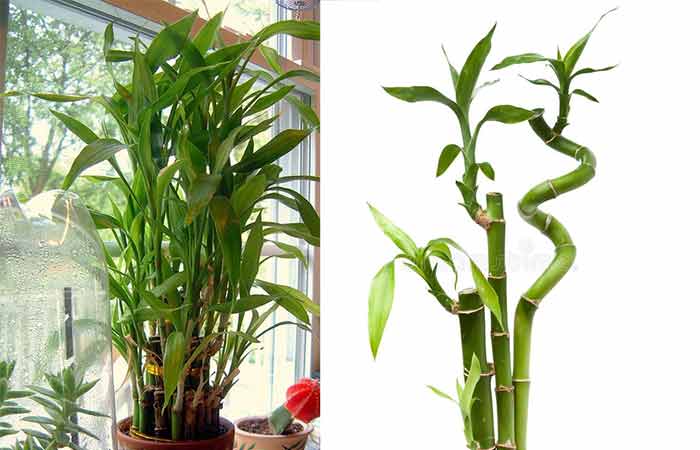
Dracaenas grow best in bright, indirect light, but can survive in low and medium light if needed. Dracaena is also among the top air-purifying plants that can filter out the toxins in your home.
Lucky bamboo is sensitive to chlorine and other chemicals found in most tap water. To get around this problem, use bottled or distilled water or just leave water out for 24 hours and the chemicals will evaporate.
English Ivy (Hedera helix)
English ivy is a beautiful climbing plant that can turn any drab wall into a fresh work of art with its veins and would be perfect near a bathroom window.
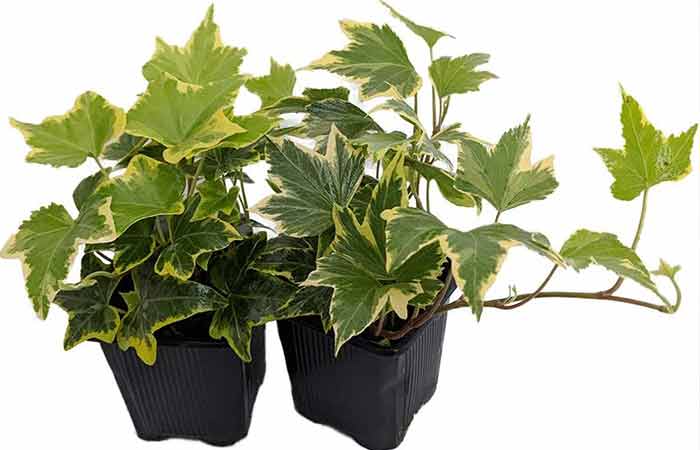
This plant prefers bright indirect light, but can tolerate low light. The more light this ivy gets, the more beautiful color will show through its leaves. However, direct light can lead to its demise.
Many other ivy varieties are good indoor hanging plant options that also do well in indirect light and shady spots.
Maidenhair Fern (Adiantum)
Maidenhair ferns are elegant plants that elevate any room, but are also easy to kill.Maidenhair ferns like indirect, bright light and are easily affected by direct sunlight.
They also prefer high humidity and dislike dry soil, so they must be moist, but not overly watered to avoid root rot. These plants also prefer distilled water over hard water (which comes from the sink).
Parlor Palm (Chamaedorea elegans)
Parlor palms are lush plants that are great for your dining room or living room.Parlor palms can grow in low light, but grow the best in medium light.
They also prefer shadier areas to bright areas, so you don’t have to worry about keeping them too close to a window or your bathroom doesn’t have a window. Parlor palms can even thrive with artificial light if needed.
Peace Lily
The peace lily, also known as the spathe flower or white sails plant, is the common name for several species in the Spathiphyllum genus. Contrary to the name of this plant, a peace lily is not a true lily at all.
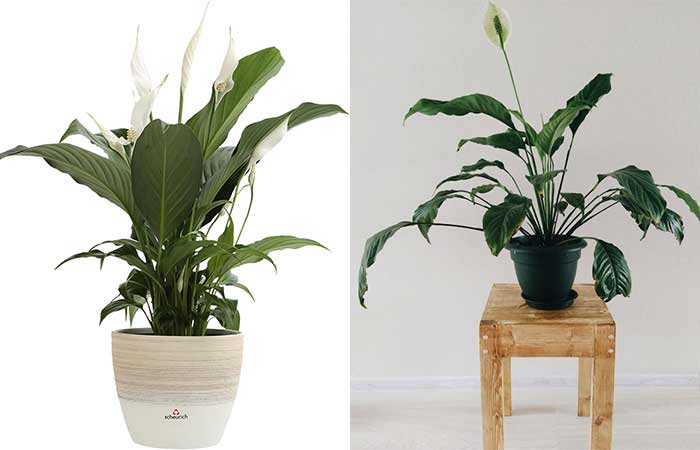
The white petal it has is actually a leaf bract that grows around the yellow flower. Standard peace lilies can grow between 24 and 40 inches (ca. 1 meters), so they are mostly used as floor decor in the bathroom.
Peace lilies enjoy low to medium light and can also thrive on fluorescent light. The more light the peace lilies receive, the more likely they are to produce white flowers.
They can thrive in areas with less light, but are much less likely to flower. The peace lily is also one of the best plants to purify the air.
Peace lilies are far more tolerant of under watering than overwatering, which is one of the most common reasons for a peace lily to die. Due to this, do not water them on a schedule, but check them weekly if they need some watering.
Simply touch the top of the soil to see if it is dry. If it is, water your peace lily. If the soil is still damp, the plant does not need to be watered.
.Peace lilies also benefit from repotting or dividing when they outgrow their containers. Signs that a peace lily plant has outgrown its container include drooping less than a week after being watered and crowded, deformed leaf growth.
Since peace lilies are from a tropical environment, do your best to keep the air around your plant humid. One way to do so is to set the pot on a humidifying tray of pebbles and water. The water evaporates and moistens the air around your plant. They can also enjoy the steamy environment from the bathtub and hot showers.
Peacock Plant (Calathea makoyana)
The peacock plant has many names: cathedral windows, rattlesnake plant or zebra plant. These names originate from its beautiful foliage that some say resembles the beauty of a peacock’s feathers.
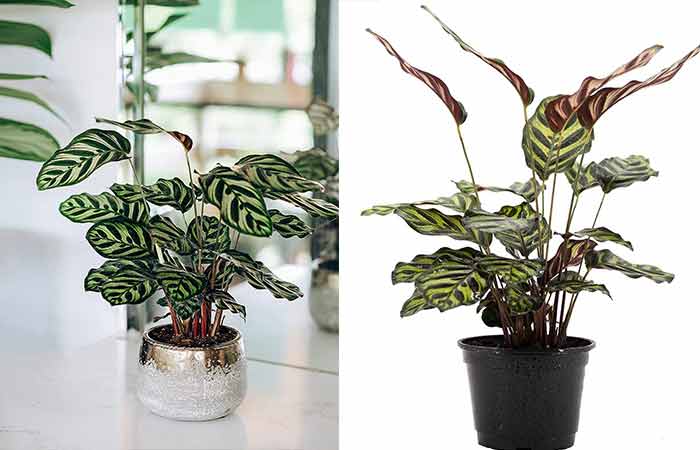
It can grow up to a height of four feet. Peacock plants are very showy and for being particular with their care. They prefer humid temperatures at a level of 60 percent or more is needed for their best performance.
The bathroom has a high humidity, hence the perfect environment for the plant. Distilled or rain water and moist (but not damp) soil is suitable for their growth. Peacock plants prefer low to medium light and can experience sad leaves with an excess of direct light.
Pale markings on the leaves are a sign of too much sun for the plant. When shopping around for a peacock plant, it’s best to pick a healthier species and to avoid smaller plants with brown leaves.
Peperomia
There are more than 1000 varieties of peperomias found mainly in South and Central America. One of the most popular species with many sports and cultivars is Peperomia obtusifolia sometimes called the baby rubber plant. Peperomias make nice additions to a bathroom.
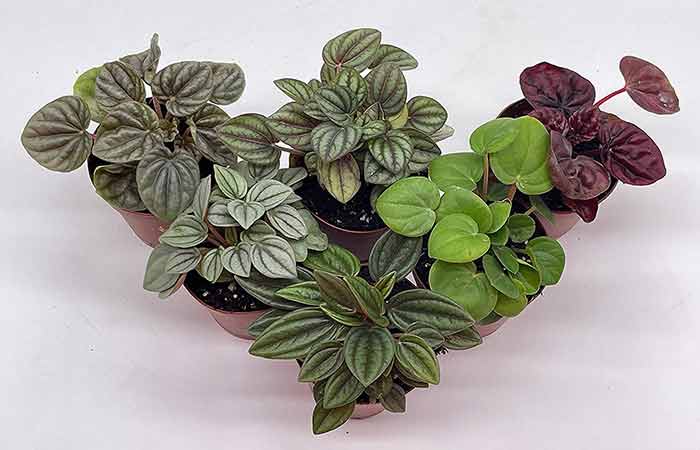
The leaves come in colors like gray, red, cream, and green. These plants prefer bright, indirect light and can still flourish under fluorescent lights. Peperomias can also prosper in partially shaded areas if necessary. Avoid direct light to deter burnt leaves.
Mature peperomia plants are rarely taller than ten to eleven feet and caring for them is easy
Over-watering is the major cause of serious peperomia plant problems such as root rots. It’s best to water these plants from the bottom. This technique keeps the leaves dry and helps prevent plant diseases. The thick leaves of peperomia plants hold water and allow the plant to withstand long periods without moisture.
Peperomia plants are originally from the rainforests of Brazil and like a warm, humid environment. You may find many small varieties perfect for bathroom use.
Philodendron
The heart leaf philodendron specifically is a hardy plant that can withstand most conditions with minimal care, including low light.
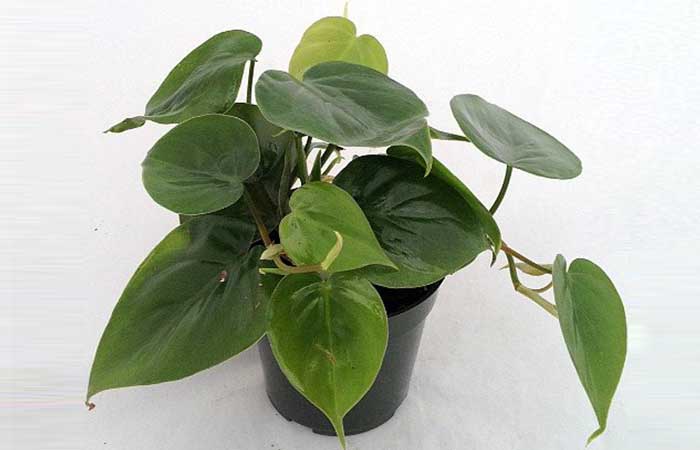
Philodendrons come in climbing and non-climbing varieties and also low-care tropical plants with glossy green, variegated, and even maroon-colored leaves. It can grow as tall as three feet and as wide as six feet with proper care.
All species of philodendrons prefer bright, indirect light and can also thrive in partial shade. Be wary if your philodendron begins to have long and skinny stems with long gaps between the leaves.
This is a sign that your philodendron is not getting enough light and should be moved to a brighter area. They also need a consistently warm temperature, so plan to keep your bathroom between 75° to 85° degrees Fahrenheit.
Pothos
Pothos plants has a genus name which is from the Greek words epi (meaning upon) and premnon (meaning a trunk) regarding its growing on tree trunks.
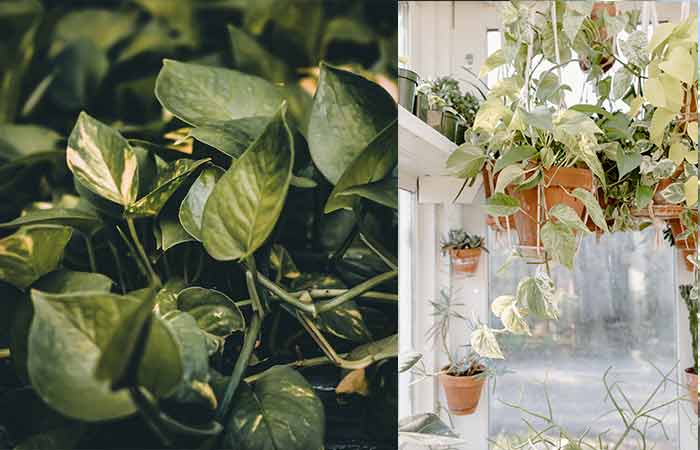
Indoors, the pothos plant usually confines itself to about six to 10 feet (3.05 m). Its leaves are bright and waxy with a noteworthy pointed heart shape, and are often green or variegated in white, yellow, or pale green.
It is rare for them to flower or produce berries, especially indoors, but certain varieties can have tiny, petal-less white flowers that feature small berries.
These plants can grow beautiful, long vines that are great for accenting walls and creating a tropical feel in any room, especially your bathroom.
Pothos plants prefer medium indoor light, but can live in low light. Too much direct light can turn their leaves yellow, while a lack of light will make their beautiful leaves turn pale.
Keep soil moist, but be careful not to overwater pothos best when you allow their soil to dry out between watering. If the leaves are wilting or turning brown, you should water the plant more frequently.
If the leaves are yellow, you may be watering it too much. Excessive watering may cause root rot. Do not allow your pothos to stand in water, unless it is a cutting started in water.
Prayer Plant (Maranta leuconeura)
When night falls, the prayer plant’s leaves become folded like hands prepared to pray and open them at dawn, and this is how the name, prayer plant came to be. This plant has pink veins and oval leaves.
The oval, variegated leaves with intricate patterns in a range of colors and patterns that look like an artist’s brushstrokes. The undersides of the leaves are often dark red. It looks beautiful in hanging baskets thanks to their unique leaves and can be hung on the bathroom wall.
A prayer plant will grow to a height of between 6 and 12 inches (ca. 30 cm) and will have 5-inch leaves. Prayer plants prefer bright, indirect light, but can tolerate low light.
However, if it does not get enough light during the day, the leaves will close in the evening and will not reopen. This plant’s leaves will also begin to fade if it does not get enough light. It prefers high humidity and moist soil.
Keep the soil moist (but not soaking wet) at all times from spring to autumn, little but often is ideal. Use tepid distilled water, filtered water or rainwater as marantas are sensitive to the chemicals in tap water.
Snake Plant
The other name of the snake plant is mother-in-law’s tongue. The nickname mother-in-law’s tongue comes from the plant’s leaves that have points. The plant has striped color, which earned it the name snake plant because it slightly resembles a snake’s skin.
There are around 70 different species of snake plant, all native to tropical and subtropical regions of Europe, Africa, and Asia. They are all evergreen and can grow anywhere from 8 inches (ca. 20 cm) to 12 feet (3.66 m) high.
They have long, wavy leaves that grow quite tall. Furthermore, they are visibly tall plants and hardy enough to withstand the most forgetful plant parent. Snake plants can hold up their sturdy look even with a few weeks of neglect.
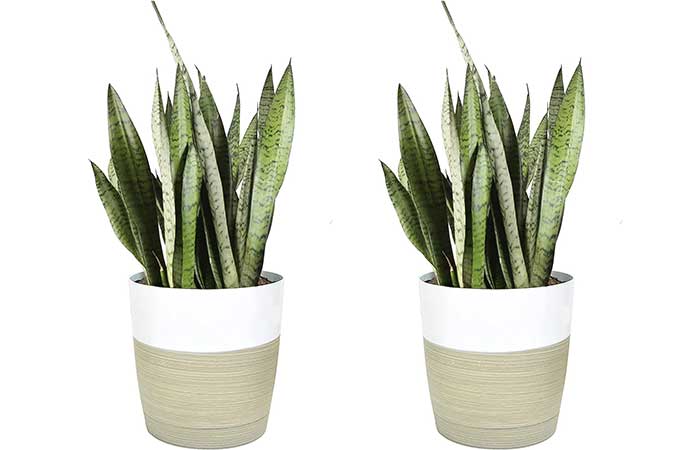
Snake plants can tolerate a wide range of light conditions but prefer indirect light. They do not require a lot of sunlight, but they can also not survive in low temperatures.
Artificial light is more than enough to keep snake plants healthy and green throughout the year. They easily rot, so it’s important to let their soil dry between watering; do not overwater them. These plants are also some of the best for absorbing moisture in your bathroom
The perfect environment for your Snake Plant consists of household humidity levels between 30 and 50%, which is the average humidity level of most homes.
Spider Plant
Spider Plant is an evergreen, perennial plant with tuberous roots and tuft appearance. Spider plants have long and skinny foliage of medium density and fine texture that arches out from its roots. Its leaves resemble the legs of a spider.
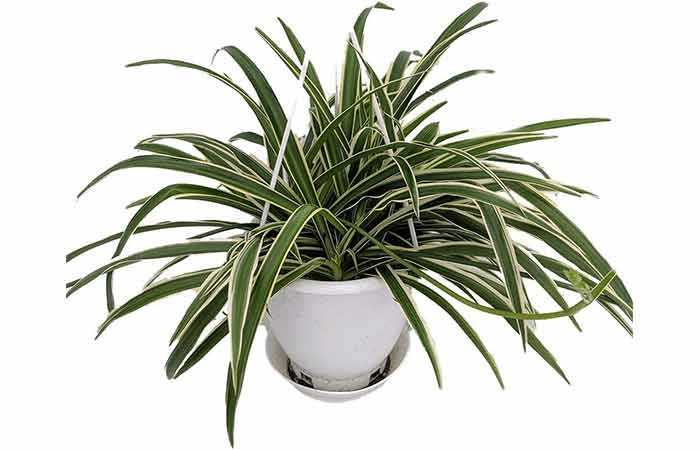
Spider plants prefer bright, indirect sunlight and can thrive without much natural light. These plants can thrive in areas with a mix of fluorescent and natural light.
These plants can produce small white flowers when cared for correctly and sprout spiderettes, or baby spider plants that can be repotted to grow more spider plants.
They can sometimes have browning leaves as a result of exposure to fluoride in water. Watering with distilled or rain water can help deter browning and keep your plant nice and green.
It does well with average humidity and cool to average temperature, although it can tolerate warmer conditions.
Boston Fern
The Boston fern, or Nephrolepis exaltata Bostoniensis, is a type of sword fern that originated in humid forests and swamps. Its distinctive arching fronds are a mutation from the straight fronds of standard sword ferns.
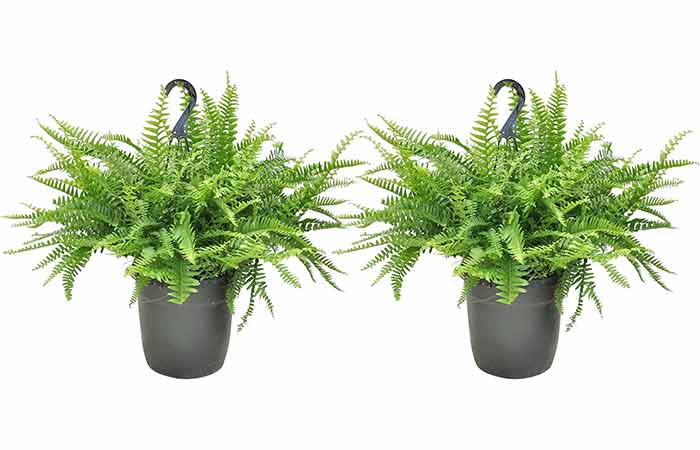
It has a graceful green color and the fronds are always drooping and are naturally cut in such a way to give it a ruffled-looking effect. The fronds of the Boston fern grow up to 3-feet in length, and the arching effect of the leaves gives a feather-like appearance.
Boston Ferns do need a high level of humidity to really thrive. They absolutely love moist air, will accept average levels, but will suffer if humidity is low. This makes the bathroom the best place to place them.
Their natural habitat of dappled shade means that Boston ferns do best with lots of indirect light. They prefer standard room temperature, 55 to 75 °F (13 to 24 °C). Boston ferns like moist, rich, loamy soils that offer excellent drainage.
Overwatering your ferns leads to the development of root rot, which kills off the plant. Always water with lukewarm water, and never let the soil dry out entirely between watering.
Staghorn Fern
Other nicknames for the staghorn fern include antelope ears and elkhorn fern.
These plants prefer bright, indirect or filtered light and dislike direct sun. This plant cannot survive with artificial light, so it’s best to place it wherever you get the most natural sunlight without positioning it the way of the sun’s rays.
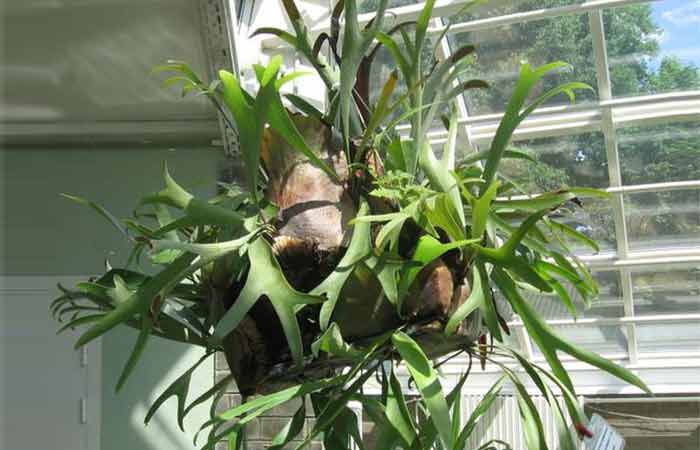
ZZ Plant (Zamioculcas zamiifolia)
Eternity Plant or ZEE ZEE Plant are the other common names of this plant. It is a sturdy South African plant that can tolerate a wide variety of conditions.The ZZ plant is one of the hardest plants around and is nearly impossible to kill.
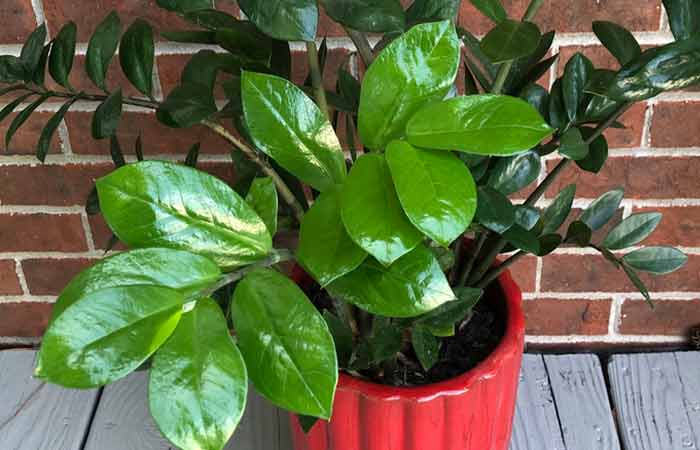
Its lush foliage and tough nature make it one of the best plants for anyone in desperate need of some green. It also has waxy looking leaves that give it a nice shine. ZZ has thick, glossy, dark green leaves that grow on long fronds.
It is a very attractive plant that attains a maximum height of two feet.The ZZ plant thrives the most in bright, indirect light, but can live in very low light. It can also tolerate areas with no natural light and minimal amounts of fluorescent lights.
It dislikes direct light and will begin to have yellow, curling leaves if it takes in too much light. Furthermore, it also withstands a dry environment and thrives with sporadic watering.
If you do forget to water it, and it begins to drop leaves, give it a good watering, and it is certain to bounce back.
Care Tips for Low-light and Windowless Bathroom Plants
Providing the right amount of light, too much or direct light might be harmful to the plant.
Water the plant regularly but do not overwater them.
Since fluoride and chlorine present in tap water affects most of these plants, use distilled water when watering them.
Create the right appropriate humidity levels in the bathroom.
Wipe the dust off the leaves gently with a soft, damp cloth once in a while. Dust covers the plant’s stomata, which can stop or slow down photosynthesis.